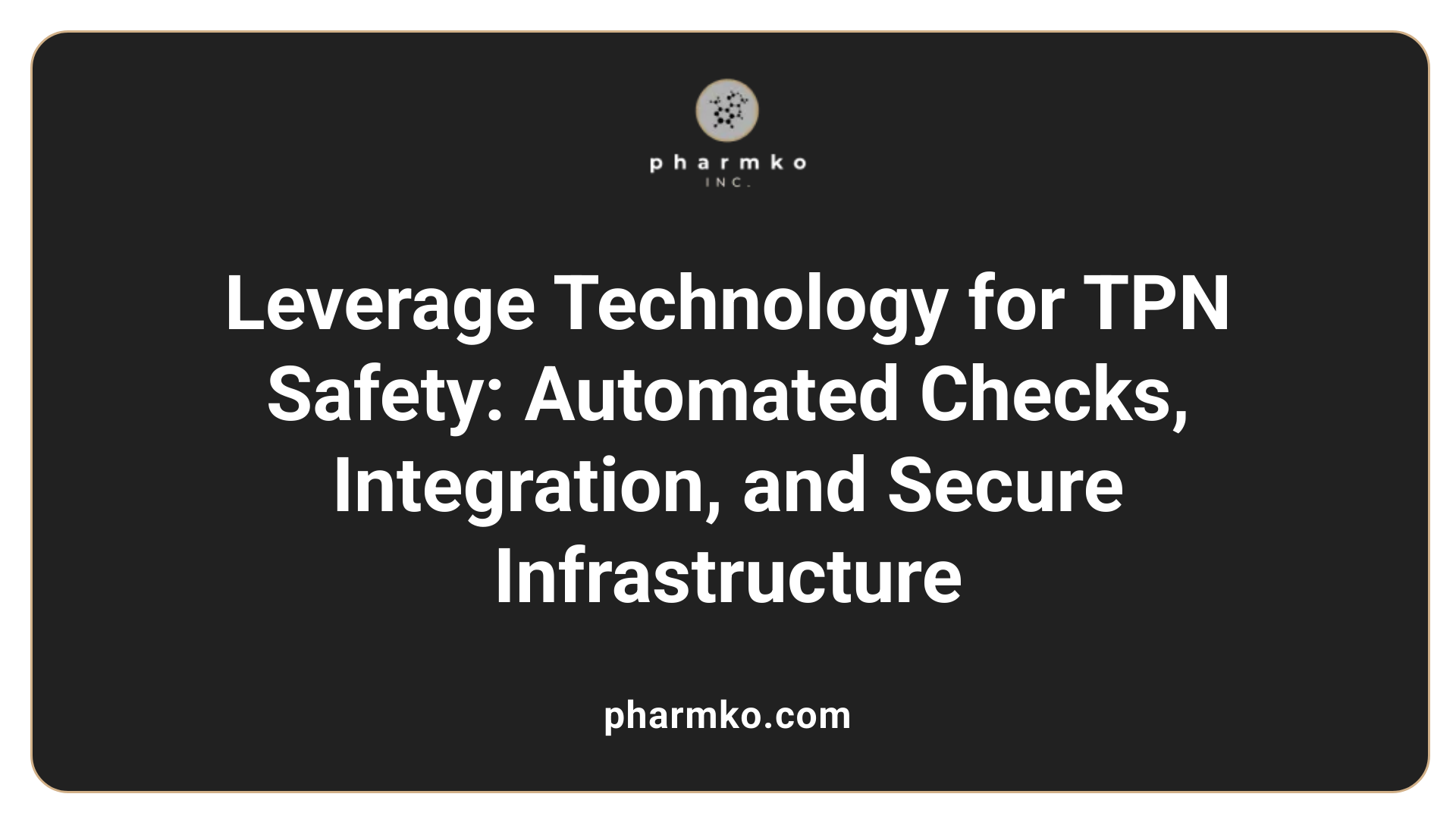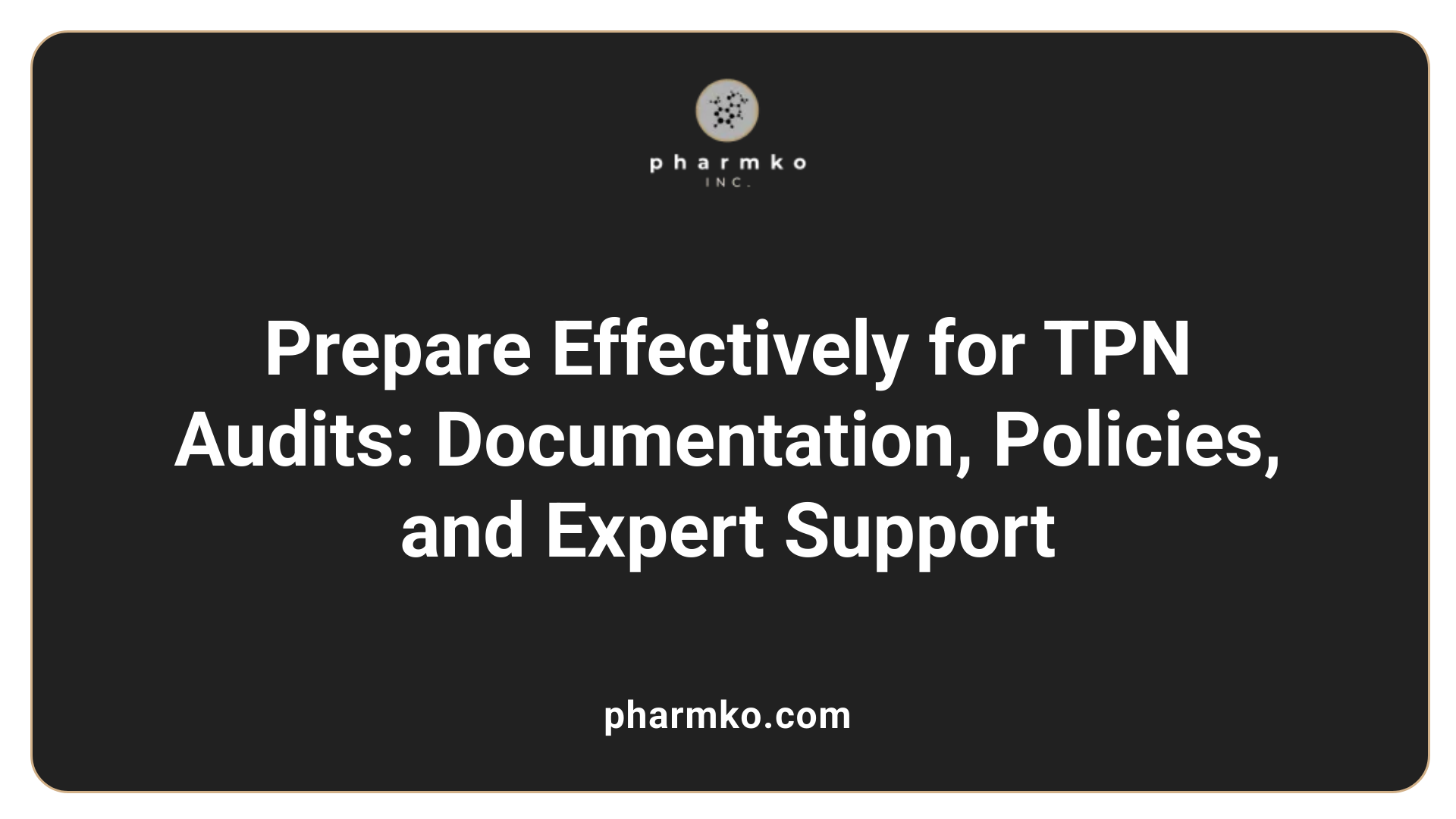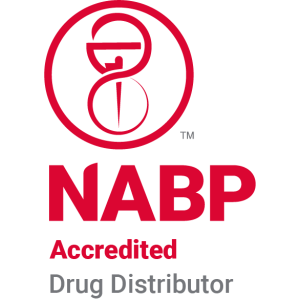Ensuring TPN provider compliance
Introduction to TPN Compliance and Industry Standards
In the dynamic world of media and entertainment, ensuring top-tier cybersecurity and content protection is paramount. The Trusted Partner Network (TPN) plays a crucial role in benchmarking and enhancing the security practices of service providers involved in content creation, distribution, and management. For TPN providers, compliance with industry standards and rigorous assessment processes are essential to safeguard intellectual property, prevent piracy, and maintain strong industry relationships. This article explores the standards, assessment procedures, technological support, and best practices necessary for effective TPN provider compliance, ensuring they meet the evolving security demands of the industry.
Understanding Certification and Accreditation Standards for TPN Providers

Assessment standards and process
A TPN (Trusted Partner Network) assessment is a voluntary cybersecurity audit that benchmarks a service provider’s security practices against industry standards known as the MPA Content Security Best Practices. The process involves a comprehensive review of various security domains including information security management systems (ISMS), risk management strategies, physical security measures, digital security protocols, cloud security, secure software development practices, and content handling workflows.
The assessment begins with a self-attestation or readiness review, moves through a collaborative review phase, and culminates in an independent audit performed by TPN-accredited assessors. These experts evaluate conformance to established industry controls, identify non-conformance areas, and deliver a detailed report of the organization’s cybersecurity posture.
Participation helps organizations demonstrate their commitment to content security, essential for engaging with content creators and studios. While TPN assessments are not certifications or pass/fail tests, achieving status such as Blue Shield or Gold Shield indicates adherence to high security standards, instrumental for industry trust and compliance.
International frameworks related to TPN assessments
Though TPN assessments are internally developed, they align closely with several recognized international standards. These include ISO/IEC 27001:2022, which governs information security management systems, and NIST Special Publication 800-53 Rev. 5, which offers comprehensive security controls.
Additionally, TPN’s controls are consistent with the CSA CCM (Cloud Controls Matrix) and the ISACA IT Audit Framework (ITAF), ensuring global best practices are integrated into the evaluation process. This alignment guarantees that assessments are based on robust, internationally accepted security principles.
Assessor qualification criteria
Assessors conducting TPN evaluations are industry veterans with specialized expertise in cybersecurity within entertainment content supply chains. They must meet stringent qualification criteria, including certifications from reputable bodies such as ISACA, (ISC)2, and CompTIA. These certifications demonstrate a comprehensive understanding of security standards, risk mitigation, and audit procedures.
Furthermore, assessors are required to participate in ongoing education and certification renewal programs to stay current with evolving standards. Their proficiency ensures objective, thorough, and consistent evaluations aligned with international best practices.
This rigorous assessor qualification process ensures organizations receive credible, actionable insights into their security posture, fostering ongoing improvement and confidence in industry security standards.
Ensuring Compliance with Standards and Regulations within TPN Frameworks

How can TPN providers ensure compliance with relevant standards and regulations?
To meet the necessary legal and regulatory requirements, TPN providers must implement rigorous documentation practices. This includes maintaining valid written orders that align with standard written order (SWO) criteria—covering patient identification, order date, detailed description, and healthcare practitioner information.
Essential proof of delivery (POD) records and comprehensive medical documentation supporting the medical necessity of TPN are critical. All these records should be securely stored for at least seven years, adhering to CMS guidelines.
Accurate billing relies on correct coding and meticulous verification of refills. Providers should contact patients directly to confirm and document refills, avoiding automation that might lead to errors. Orders must bear authorized signatures; stamp signatures or unauthorized markings are prohibited.
It is equally important for all documentation to clearly demonstrate the medical purpose of TPN. Regular staff training and internal audits help foster staff adherence to these standards, ensuring ongoing compliance and reducing the risk of regulatory violations.
Proper record-keeping, training, and compliance checks are fundamental to maintaining high-quality, safe TPN service delivery within legal frameworks.
Assessment and Verification Processes for TPN Provider Compliance

What are the steps involved in the assessment and verification process for TPN provider compliance?
The pathway to TPN compliance begins with voluntary participation through the TPN+ portal, where service providers undertake a series of steps to demonstrate their cybersecurity practices and content security measures.
Initially, providers complete a Blue Shield self-attestation assessment. This step involves self-evaluating their security posture against established standards, focusing on areas such as ISMS implementation, risk management, physical and digital security, cloud security, and content workflows. This self-assessment helps organizations identify gaps and opportunities for improvement.
Following self-attestation, providers can choose to undergo an independent Gold Shield assessment conducted by TPN-accredited assessors. This comprehensive review verifies the provider’s conformance to industry best practices based on the MPA Content Security Best Practices. The assessment encompasses evaluating cybersecurity controls, operational processes, and security frameworks.
Assessors systematically review the provider’s security controls, including network security, access management, employee training, incident response plans, and vendor risk management. The result is a detailed report highlighting strengths, areas needing enhancements, or potential risks. Importantly, these evaluations do not carry a pass or fail designation but serve as benchmarks for continuous improvement.
After assessments, providers document remediation plans for any identified vulnerabilities or inefficiencies. They are responsible for addressing these issues to uphold their security posture.
Maintaining TPN status requires annual or biennial re-assessments, ensuring ongoing adherence to the security standards. All reports and assessment results are kept within the TPN system to preserve confidentiality, but they serve as proof of ongoing commitment to cybersecurity excellence and content protection.
This structured yet flexible process underscores the industry’s emphasis on continuous security enhancement rather than mere certification, fostering trust and confidence among content owners, studios, and service providers.
Core Security Practices and Controls for TPN Compliance

What are the security practices and controls relevant to TPN provider compliance?
TPN providers must adopt a robust set of security measures aligned with industry-recognized standards to ensure the integrity and confidentiality of media content. These standards include SOC II, ISO 27002, and the NIST Cybersecurity Framework, which provide comprehensive guidelines for managing information security risks.
Implementing effective security controls involves multiple layers. Key practices include the use of TLS/SSL encryption for data in transit, role-based permissions that restrict access to sensitive content, and integration with directory services like Active Directory and LDAP to verify user identities.
Regular security assessments and audits play a vital role in maintaining compliance. For instance, third-party evaluations are mandatory for achieving TPN Gold Shield certification, offering an independent verification of an organization’s security posture.
Content security is equally important. Organizations must implement data segregation, secure access controls, and secure software development practices to prevent unauthorized access and content leaks.
Overall, ensuring TPN compliance is an ongoing process that combines industry-standard controls, continuous monitoring, and adherence to the specific security benchmarks prescribed by the TPN framework. This comprehensive approach helps mitigate cybersecurity threats and protects valuable media assets in the entertainment supply chain.
Technology and Infrastructure Supporting TPN Compliance

How do software, technology, and infrastructure support TPN compliance?
Technology and infrastructure are essential for maintaining the security and operational standards required in TPN (Total Parenteral Nutrition) management and compliance. Advanced TPN ordering and management software incorporate automated safety checks, real-time alerts, and seamless integration with electronic medical records (EMRs). These features significantly reduce prescription errors and enable better coordination among healthcare teams, ensuring that each patient receives the correct formulation tailored to their needs.
Electronic health records and computerized provider order entry (CPOE) systems facilitate instant communication across disciplines, supporting precise decision-making and adherence to clinical protocols. Barcode medication administration systems verify patient identity and medication details at the bedside, adding an extra layer of safety.
Furthermore, cybersecurity solutions like Web Isolation protocols safeguard sensitive patient data, allowing hospitals and service providers to meet stringent security standards when sharing and storing TPN-related information. These technological safeguards not only promote compliance but also enhance overall safety and reliability in TPN delivery.
Integration with existing systems
Effective TPN management relies on smooth integration with existing hospital systems such as EMRs, pharmacy management tools, and lab systems. Integrating these systems helps automate workflows, reduce manual entry errors, and provide clinicians with comprehensive, up-to-date patient data. This seamless flow of information supports timely interventions, ongoing monitoring, and compliance with safety standards.
Automated alerts and safety checks
Built-in alerts act as safety nets, flagging potential issues like incorrect dosing, drug interactions, or allergies before medication administration. Automated checks ensure that TPN formulations meet established guidelines, minimizing risks such as infections, liver issues, or nutritional imbalances.
Overall, leveraging robust software, secure infrastructure, and system integrations are vital for ensuring TPN safety, regulatory compliance, and continuous quality improvement.
Industry Regulations and Standards for TPN Providers

What do regulations and industry standards require for TPN provider compliance?
TPN providers operate within a framework of established regulations and industry standards designed to ensure safe, effective, and compliant delivery of total parenteral nutrition services. These guidelines are issued by reputable organizations such as the American Society for Parenteral and Enteral Nutrition (ASPEN), the Centers for Disease Control and Prevention (CDC), and governmental agencies like the Centers for Medicare & Medicaid Services (CMS).
According to these standards, providers must follow specific protocols for patient assessment, catheter placement, infection control, and ongoing monitoring. ASPEN recommendations emphasize rigorous infection prevention strategies, proper technique during administration, and comprehensive patient education. The CDC offers guidelines on handling devices and preventing healthcare-associated infections, which are critical for TPN safety.
In addition to clinical standards, compliance with coding and billing procedures is mandatory. Providers must accurately use current procedural terminology (CPT) codes for services rendered, Healthcare Common Procedure Coding System (HCPCS) codes for supplies and equipment, and International Classification of Diseases, Tenth Revision (ICD-10) diagnosis codes for documentation of medical conditions.
Ensuring coding accuracy is vital to avoid claim denials and legal penalties. Regular updates to these codes by the American Medical Association (AMA) and Centers for Medicare & Medicaid Services require providers to stay informed of the latest revisions. Proper documentation should clearly detail the scope of care, patient status, and specific services, matching the appropriate codes.
Maintaining compliance involves integrating these standards into daily clinical workflows, training personnel appropriately, and conducting periodic audits. Adhering to recognized clinical guidelines, utilizing the most recent coding updates, and keeping thorough records are essential practices for TPN providers seeking to meet regulatory expectations and deliver high-quality patient care.
| Regulatory Body | Guidelines/Standards | Focus Areas | Relevance for TPN Providers |
|---|---|---|---|
| ASPEN | Home Nutrition Support Standards | Clinical protocols, infection control | Ensures safe TPN administration and patient management |
| CDC | Infection Prevention Guidelines | Hygiene, catheter care | Minimizes risk of infections related to TPN |
| CMS | Billing and Coding Policies | Documentation, reimbursement | Guides accurate billing and legal compliance |
| AMA | CPT, ICD-10 updates | Service coding, diagnosis | Ensures correct claims submission |
Understanding and adhering to these diverse standards helps TPN providers maintain compliance, deliver safe patient care, and optimize reimbursement processes.
Preparation Strategies for TPN Compliance Audits

How should TPN providers prepare for compliance assessments and audits?
Preparing for a TPN (Trusted Partner Network) compliance assessment involves a strategic and comprehensive approach. Providers should start by thoroughly reviewing the MPA Content Security Best Practices document, which outlines industry standards for cybersecurity and content security tailored to the media and entertainment supply chain.
A crucial step is gathering concrete evidence that demonstrates adherence to these standards. This includes documented policies, procedures, and records related to network security, risk management, physical and digital security measures, employee training, vendor assessments, and incident response plans. Having organized, up-to-date documentation ensures the review process goes smoothly and showcases a strong security posture.
Establishing formal policies is essential. These policies provide clarity across the organization on security expectations and protocols, making it easier to align practices with the best practices outlined by the TPN assessment framework.
Understanding the organization’s risk thresholds and being prepared to address any remediation or action items identified during the assessment is vital. Providers should review potential vulnerabilities and ensure corrective measures are in place prior to the audit date.
Engaging support from industry experts or consultants with experience in TPN assessments and media content security can add value. These specialists can conduct pre-assessment reviews, identify gaps, and assist in remediation efforts, ultimately increasing the likelihood of a successful evaluation.
Proactive planning is the cornerstone of a successful assessment. By thoroughly preparing documentation, understanding compliance requirements, and leveraging expert advice, TPN providers can navigate audits confidently, demonstrating their commitment to maintaining industry standards and securing valuable content assets.
For further guidance, searching for 'TPN audit preparation and best practices' can provide additional insights and tailored strategies for organizations aiming to achieve or maintain TPN certification.
Benefits and Continuous Improvement in TPN Compliance

What are the benefits of TPN provider compliance in healthcare settings?
Ensuring that TPN providers adhere to established protocols offers several significant advantages for both patients and healthcare systems. Compliance directly impacts patient safety by minimizing the risk of complications such as infections, metabolic disturbances, and catheter-related issues. Proper management of TPN procedures and careful monitoring enhance the nutritional support tailored to each individual's needs, which is especially vital for vulnerable groups like children and patients with complex gastrointestinal conditions.
Adherence to industry standards fosters effective teamwork among healthcare professionals, including dietitians, nurses, pharmacists, and physicians. This collaboration results in improved clinical outcomes, reduced hospital readmissions, and lower healthcare costs. It also ensures that TPN is prescribed based on accurate diagnoses and evidence-based practices, maximizing therapeutic efficacy.
The continuous pursuit of compliance and quality assurance helps healthcare organizations identify areas for improvement through regular audits and assessments. This ongoing process leads to operational efficiencies by streamlining workflows, reducing errors, and enhancing safety protocols. Ultimately, maintaining high standards of TPN care sustains patient trust, supports recovery, and elevates the overall quality of medical support within healthcare settings.
| Aspect | Benefit | Additional Notes |
|---|---|---|
| Patient Safety | Reduces infections, metabolic issues, and complications | Ensures proper catheter placement and strict aseptic technique |
| Operational Efficiency | Streamlines procedures and reduces errors | Supports staff training and process automation |
| Quality Assurance | Promotes adherence to best practices and standards | Facilitates audits and continuous improvement initiatives |
By fostering a culture of compliance and quality, healthcare providers can deliver safer, more effective TPN therapy, ultimately improving patient wellbeing and organizational performance.
Maintaining Ongoing TPN Provider Compliance and Safety Monitoring

What are the best practices and guidelines for maintaining ongoing TPN provider compliance?
Ensuring ongoing compliance as a TPN provider is vital for maintaining patient safety and delivering effective nutritional support. Industry guidelines and regulatory standards, such as those from the FDA and leading professional societies, serve as the foundation for best practices.
Providers should develop and follow detailed protocols covering all aspects of TPN preparation and administration. This includes sterile techniques during pharmacy compounding, correct labeling, and proper storage practices to reduce the risk of contamination and infection.
Regular patient monitoring also plays a key role. Routine laboratory work, such as checking electrolytes, liver enzymes, and glucose levels, helps identify metabolic imbalances early. Close observation of venous access sites for signs of infection or dislodgement is equally important.
Staff education is essential for staying aligned with the latest safety standards. Ongoing training sessions, updates on emerging best practices, and changes in regulatory requirements help healthcare teams provide consistent, high-quality care.
Documentation practices, including detailed records of patient assessments, medication administration, and adverse events, are crucial for audits and continuous improvement. Periodic internal audits can uncover areas for enhancement, ensuring adherence to policies and standards.
Incorporating these practices into daily routines supports sustained compliance, reduces the risk of complications, and enhances overall patient outcomes in TPN therapy.
Safety Monitoring and Critical Considerations in TPN Administration

What are the critical safety and monitoring considerations when administering TPN?
Managing Total Parenteral Nutrition (TPN) requires meticulous attention to safety and patient monitoring to prevent potential complications. Regular blood glucose monitoring is vital, especially during the initiation phase, with multiple checks daily until levels stabilize, then at least once every 24 hours for ongoing management.
Electrolyte balance is another cornerstone of safe TPN practice. Healthcare providers routinely check levels of sodium, potassium, calcium, magnesium, phosphate, and bicarbonate, adjusting TPN formulations as needed. Renal function tests, including serum creatinine and blood urea nitrogen (BUN), are also essential to detect early signs of kidney stress or dysfunction.
Beyond laboratory tests, clinical vigilance is crucial for early identification of metabolic disturbances, such as refeeding syndrome, hyperglycemia, or hypoglycemia, which can cause severe complications if unmanaged. Electrolyte imbalances often accompany these metabolic issues and require prompt correction.
Risks associated with TPN extend to line-related infections, thrombosis, and vascular injury. To minimize these, strict aseptic technique during catheter handling and dressing changes is mandatory. Regular line assessments help detect early signs of infection or malfunction.
Ongoing patient evaluations include physical examinations, biochemical assessments, and monitoring for adverse events. These multidisciplinary efforts involve physicians, nurses, dietitians, and pharmacists to ensure a comprehensive approach to safe TPN therapy.
In summary, vigilant monitoring of blood parameters, careful management of metabolic and infection risks, and prompt intervention for abnormal findings are fundamental to optimizing TPN safety and effectiveness.
Conclusion: Upholding Excellence in Content Security and Medical TPN Practices
Ensuring compliance in TPN provider operations is a multifaceted endeavor that encompasses adherence to rigorous industry standards, continuous assessment, technological integration, and ongoing staff education. For content security within the media sector, participation in voluntary TPN assessments based on established frameworks like ISO/IEC standards and NIST ensures organizations demonstrate their commitment to safeguarding assets against piracy and cyber threats. In healthcare, strict compliance with regulatory guidelines, meticulous documentation, and comprehensive safety monitoring underpin quality patient outcomes and safety. The integration of advanced cybersecurity solutions, automated safety checks, and standardized protocols fosters a resilient and compliant environment. Ultimately, proactive engagement in continual improvement efforts strengthens trust among stakeholders, enhances operational efficiency, and ensures the safeguarding of both digital and medical assets. Committing to these principles is vital for organizations aiming to uphold excellence, reliability, and safety in their respective industries.
References
- What is a Trusted Partner Network (TPN) Assessment
- TPN Certification for Film, Television, and Creative Businesses
- The Role of TPN Ordering Software in Patient-Centered Care
- Content Delivery & Security Association (CDSA)
- TPN Assessment Process
- LucidLink achieves SOC 2, Type II Compliance & TPN Blue ...
- AvevoRx Adds New Total Parenteral Nutritional Program to ...













